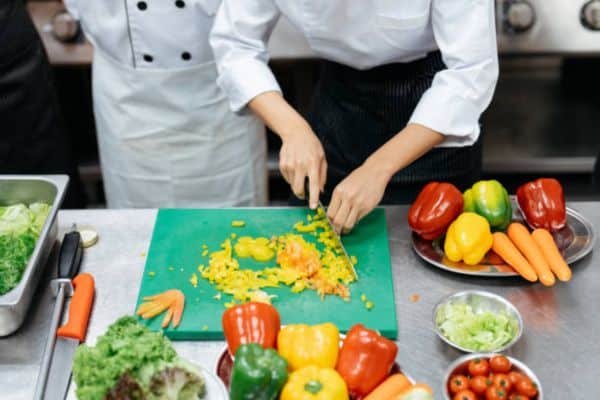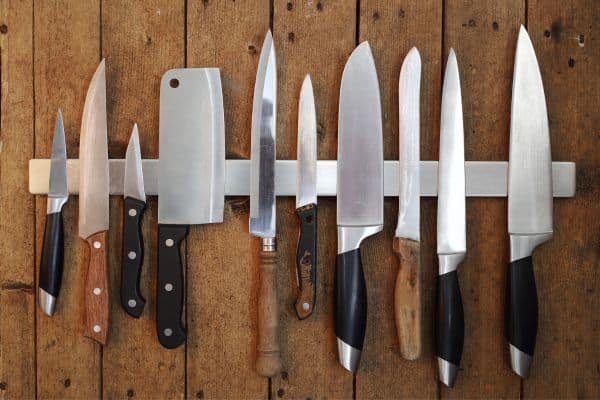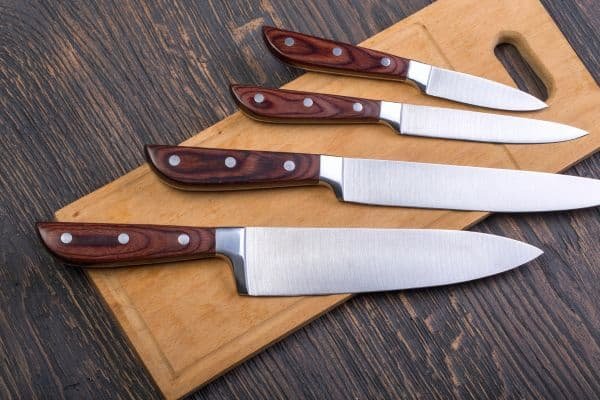The first time I chopped an onion, it was a mess. My knife slipped. Pieces flew everywhere. I didn’t know there were different knives for different jobs. Over time, I learned that knife skills are not just for chefs. They help home cooks stay safe, save time, and enjoy the process. With the right knife, even slicing a tomato feels smooth. You don’t need fancy tools—just the right knowledge. In this guide, you’ll learn how to use different kitchen knives with confidence. These beginner knife skills will make your cooking faster, cleaner, and easier from the very first cut.
What Makes Each Knife Different? A Quick Overview
Every knife has a job. Some cut large things. Others do fine work. Size, shape, and weight matter more than people think. You don’t need many knives, but you should know what they do.
To learn how to use different kitchen knives, it’s important to know what each one is made for. A chef’s knife is strong. It cuts meat, fruit, and vegetables. A pair is small. It helps peel and trim. A serrated has teeth. It slices bread, cake, or tomato without pressing. A utility knife is medium-sized. It does a bit of everything. A boning cuts close to bones. A fillet glides through a fish. A cleaver is heavy and strong. It breaks down big cuts.
How to Use a Chef’s Knife

The chef’s knife is the most used tool in my kitchen. It feels solid, sharp, and fast. You can slice meat, chop veggies, and mince herbs with ease. One knife, many jobs.
Hold it with a pinch grip. Place your thumb on one side of the blade, your index finger on the other. Wrap the rest of your hand around the handle. This gives balance and control.
Keep the tip down. Rock the blade back and forth in a smooth line. The curve helps with motion. Don’t push. Let the knife glide through the food.
I use this knife for almost every meal. Last night, I chopped onions, garlic, and spinach in minutes. It saves time and keeps things clean.
How to Use a Serrated Knife
A serrated knife has teeth. It works like a small saw. This knife cuts bread, cake, or tomato without crushing. It glides through soft food with ease.
Hold it with a firm grip. Start with light pressure. Move the blade back and forth in slow strokes. Let the teeth do the cutting.
Don’t press down hard. That flattens the food. Keep the motion smooth and steady. This keeps slices clean and keeps crumbs low.
I use this knife to slice rolls and ripe fruit. It’s also great for frozen desserts. My go-to tip
How to Use a Serrated Knife (a.k.a. Bread Knife)

A serrated knife isn’t just for bread. It works great on soft food with a firm skin. Think tomatoes, citrus, or even cakes. I reach for mine more often than I thought I would.
This blade has tiny teeth. These teeth grip the surface and glide through. You don’t need force—just light pressure and a steady hand. The key is to use a slow, back-and-forth motion.
Start at the edge and let the knife saw through. Avoid pressing down. That flattens the food and tears the skin. A clean slice feels smooth, almost like cutting foam.
How to Use a Utility Knife
A utility sits right between big and small. It’s the one I grab for fast jobs. It cuts cold cuts, cheese, and small fruits with ease. Sandwich prep feels smoother with this blade.
Hold it like a chef’s knife. Wrap your fingers around the handle. Guide it with care and keep your cuts clean. The blade is sharp, but light in the hand.
Use short, straight strokes—perfect for chopping peppers, slicing boiled eggs, or halving sandwiches. This technique gives you control without the knife feeling heavy. For optimal performance, check out our Best Kitchen Knife Set Under 100 to get started with the right tools.
Bonus: Other Knives and When to Use Them

Some knives don’t get used every day, but they shine in the right hands. These are your speciality kitchen knives. Each has a job that a chef just can’t do.
A boning knife is thin and sharp. It moves close to bones and trims meat with care. I use it for chicken, ribs, or cutting fat away.
A fillet knife is even more flexible. It glides through soft fish without tearing. Great for clean, smooth fillets at home.
A cleaver is heavy and strong. It breaks bones, cuts through thick meat, and handles hard roots like squash.
A vegetable or Santoku offers balance. Its flat edge gives clean, even cuts. I reach for it when I need precision in prep.
Knife Safety Tips for Beginners
Good cuts start with safe hands. Skills matter, but safety comes first. With the right habits, you’ll cut with ease and stay injury-free.
Hold the knife with a firm grip. Pinch the blade where it meets the handle. Wrap your fingers around the rest. This gives control and balance.
Keep your fingers safe with the claw grip. Curl your fingertips in and rest your knuckles against the side of the blade. This simple trick keeps your hand out of harm’s way.
Always use a stable cutting board. Place a damp cloth under it to stop sliding. A steady board keeps steady too.
Clean by hand, right after use. Dry it well and store it in a block or on a strip. Never toss it loose in a drawer. That’s a risk to both you and the blade.
How to Keep Your Knives Sharp and Happy

A sharp knife is safe. Dull blades slip. Sharp ones grip and glide. That’s why knife care matters more than most people think.
Use a honing rod once a week. Stand it upright. Slide the blade down each side at a light angle. This keeps the edge straight between full sharpening.
Sharpen every few months. You can use a whetstone or get it done by a pro. You’ll know it’s time when your blade starts tearing, not slicing.
Store knives the right way. Use a block, a magnetic strip, or a blade cover. Never drop them loose in a drawer. That dulls the edge and puts your hands at risk.
Final Thoughts
Knife skills grow with time. No one gets it right on the first try. Start slow. Practice often. Each slice builds better hands and sharper focus.
Don’t rush the learning. The more you cut, the more you’ll feel the blade. Your grip will improve. Your movements will feel smooth and steady.
Learning how to use different kitchen knives is a small skill with big rewards. It saves time, keeps you safe, and makes prep work feel less like a chore.

